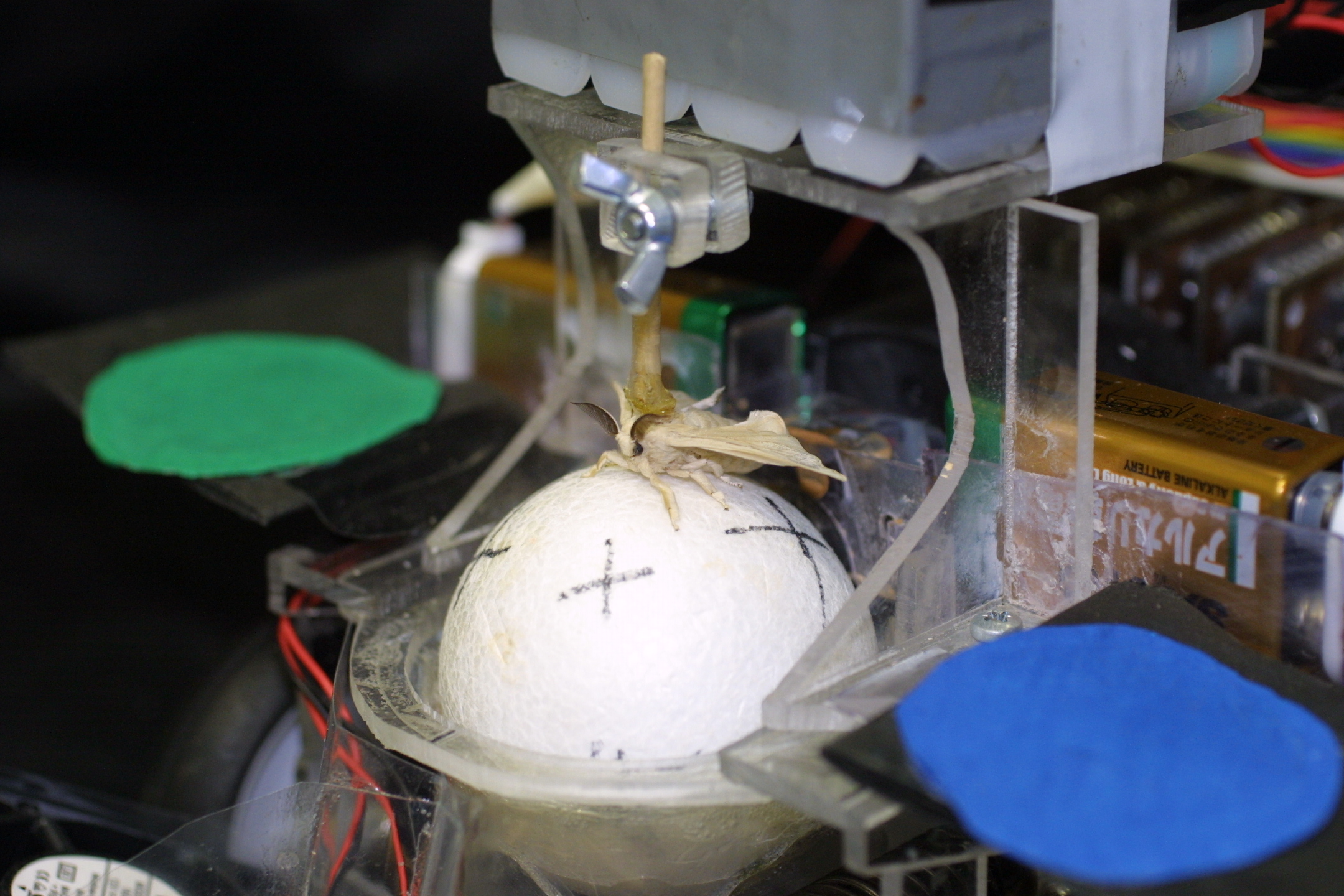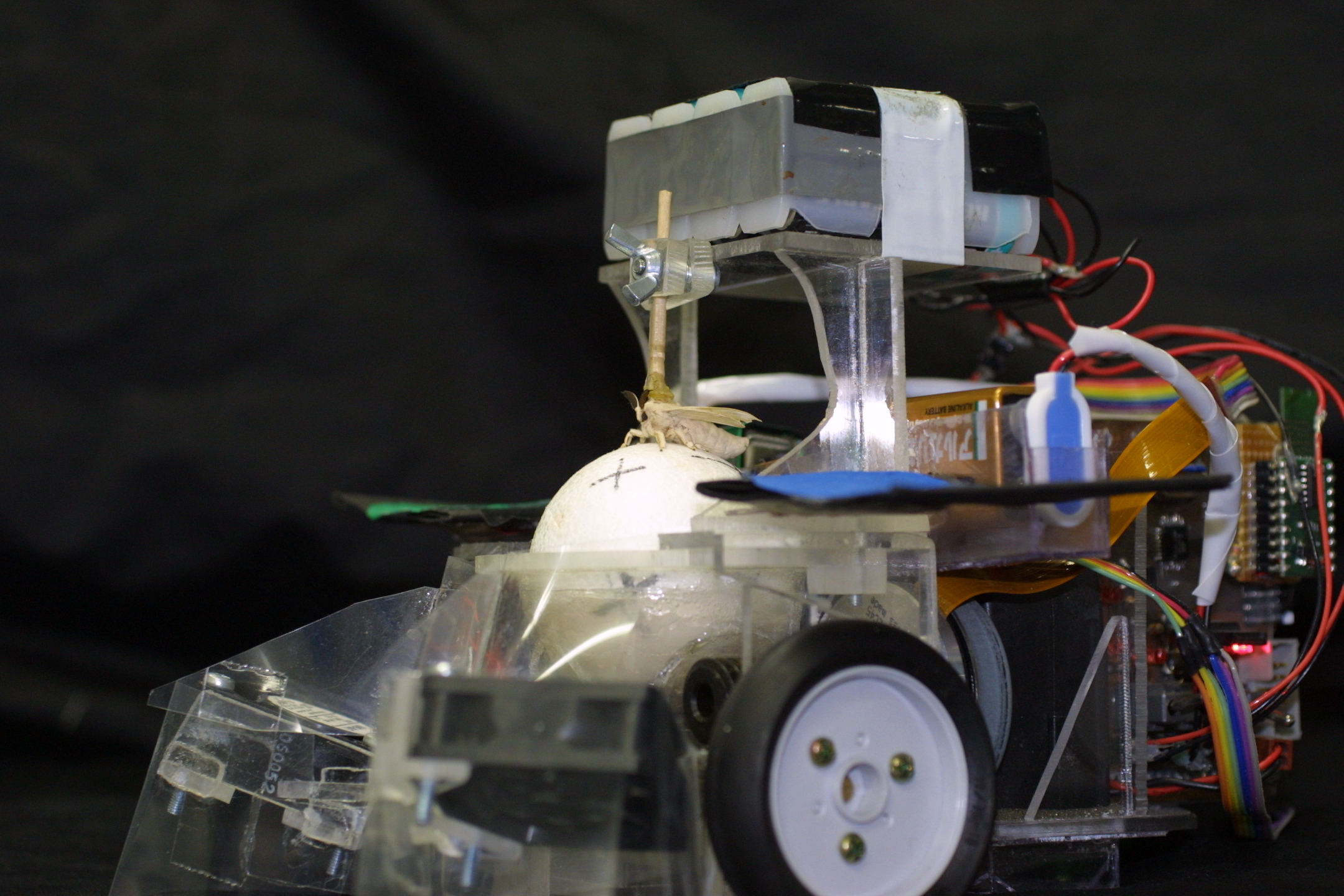Moth Drives Robot, Cruising for a Lady
No Drivers Ed necessary –the male silkmoth can steer a small car toward what he thinks is a female moth just by following his natural mating-dance instincts.

Researchers at the University of Tokyo report in Bioinspiration & Biomimetics that a tethered insect can steer a two-wheeled robot toward the source of female moth pheromones by walking on a freely rotating ball that acts as his helm. In this YouTube video, you can see a moth pass his driving test even when the robot vehicle has been programmed to pull to one side.
There is a serious point to this work. The researchers hope to learn how the moth tracks odors so they can better program self-driving robots to seek out hazardous chemical spills or leaks in the environment. Airborne chemicals can be difficult to track because they leave an intermittent trail, dispersed in patches away from their source. But male silkmoths are adept at seeking out a plume of a potential mate’s pheromones, so the researchers developed the moth car to study the way the Romeos search for love.
“By creating an ‘artificial brain’ based on the knowledge of the silkmoth’s individual neurons and tracking behavior, we hope to implement it into a mobile robot that will be equal to the insect-controlled robot developed in this study,” said lead author Noriyasu Ando in a release.

Images credit: Noriyasu Ando
Keep Reading
Most Popular
Large language models can do jaw-dropping things. But nobody knows exactly why.
And that's a problem. Figuring it out is one of the biggest scientific puzzles of our time and a crucial step towards controlling more powerful future models.
The problem with plug-in hybrids? Their drivers.
Plug-in hybrids are often sold as a transition to EVs, but new data from Europe shows we’re still underestimating the emissions they produce.
Google DeepMind’s new generative model makes Super Mario–like games from scratch
Genie learns how to control games by watching hours and hours of video. It could help train next-gen robots too.
How scientists traced a mysterious covid case back to six toilets
When wastewater surveillance turns into a hunt for a single infected individual, the ethics get tricky.
Stay connected
Get the latest updates from
MIT Technology Review
Discover special offers, top stories, upcoming events, and more.